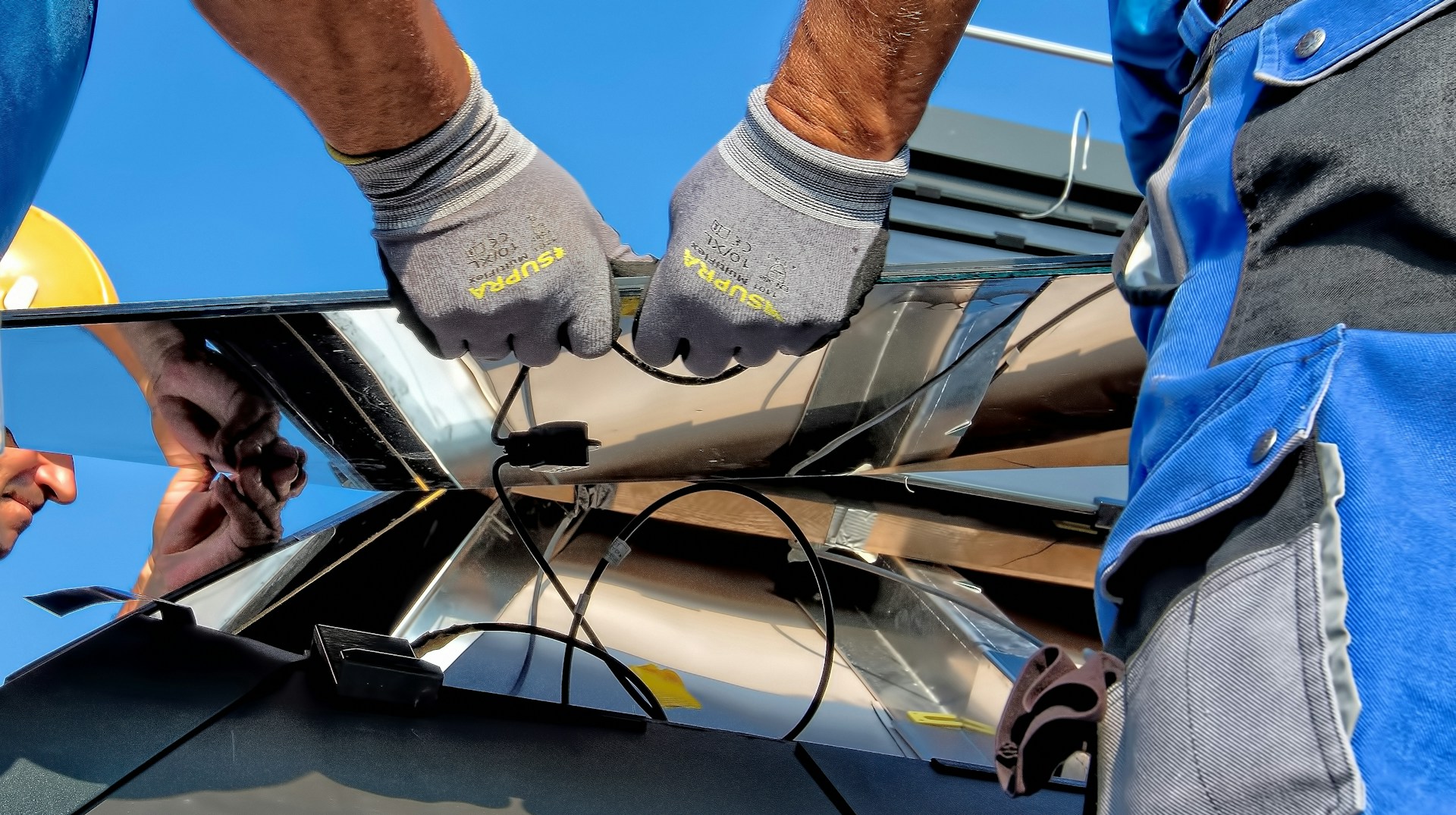The majority of photovoltaic modules now come from Asia. At the same time, the prices of solar components have recently dropped significantly. How much business remains for European suppliers?
Nowhere is the energy transition as visible as on German rooftops and balconies. Thanks to significantly reduced costs, the number of solar installations has dramatically increased. According to the German Solar Industry Association (BSW), the demand for photovoltaics among private property owners has increased tenfold over the past five years. Companies have also been equipping their roofs more frequently in recent months, explains BSW’s Managing Director Carsten Körnig.
Last year, new solar systems with a capacity of 14.1 gigawatts were installed in Germany, almost double the amount in 2022, according to the Federal Network Agency. This year, the installed photovoltaic capacity is expected to grow “in the low double-digit percentage range,” Körnig anticipates.
Displacement Competition in China
However, the boom also reveals a significant imbalance. The installed solar modules predominantly come from Chinese manufacturers, who have already pushed many European competitors out of the market. “Approximately 94 percent of PV modules come from the Asia-Pacific region. Another three percent are produced by US companies, and then comes Europe,” says Eva Poglitsch, an energy expert at the consulting firm Strategy&, a subsidiary of PwC. While German companies benefit from the installation work, German module manufacturers are left almost empty-handed.
Behind this lies fierce competition, even within China. According to data from the Chinese Solar Industry Association (CPIA), local manufacturers increased their production by 69 percent last year, producing modules with a total capacity of 499 gigawatts. In contrast, all of Europe produced only about ten to twelve gigawatts, estimates Poglitsch. In China alone, around 217 gigawatts were installed in 2023, pushing a massive supply onto the world market.
Prices Halved in Twelve Months
Meanwhile, the US has restricted imports of Chinese solar modules, exacerbating the oversupply in the European market. The result is a drastic drop in prices. According to figures from German wholesaler Pvxchange, prices for standard modules have roughly halved since May 2023.
As a result, European module manufacturers have faced a string of bad news in recent weeks. Dresden-based manufacturer Solarwatt plans to relocate its production to Asia this summer. Swiss producer Meyer Burger also plans to close its German factory.
Hope for EU Legislation
Such issues are likely to dominate the Intersolar conference in Munich, Europe’s most important industry fair, starting on Wednesday. Even before the event, the industry is urging European politicians to bring the “Net-Zero Industry Act” to life. The planned EU law is intended to ensure that industries critical to climate protection do not disappear from Europe.
However, companies still lack clear perspectives. “The solar industry in Europe finally needs a concrete plan to achieve the goal of 40 percent of photovoltaic expansion coming from European production,” Solarwatt states.
